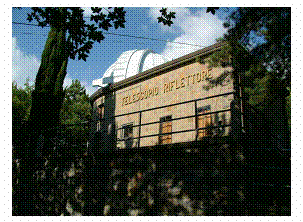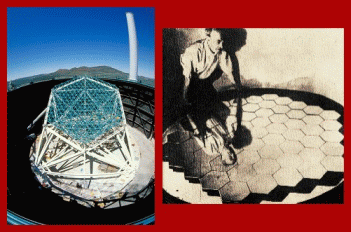Guido Horn d'Arturo (continued)
Instrumentation
Right from the beginning of the 20th century scientists had recognised the need to move observation activities from the astronomy tower in the centre of Bologna (now home to the Specola Museum), because of atmospheric and light pollution. In 1936 Horn d'Arturo opened the observatory station of Loiano, in the Appennines bordering Tuscany and Emilia, equipped with a 60cm diameter Zeiss reflecting telescope.
 Fig. 1: The building and dome of the Zeiss reflector in Loiano. (Credit: Dipartimento di Astronomia dell'UniversitÓ degli Studi di Bologna) |
At the time, the instrument was one of the largest in Europe and was used for photographic observations linked to research in the field of variable faint stars and nebulae. For Horn d'Arturo, the technical impossibility of producing large-scale mirrors would damage the future of astronomical research. The lack of adequate observational instruments "forces the researcher to imagine where he cannot see". |
|
Therefore, from the 1930s on, he designed a new type of telescope, replacing the traditional monolithic mirror with a "multiple mirror". Amid endless financial difficulties and the repercussions of World War II, Horn d'Arturo finally produced an instrument with a 180cm diameter and 10.4m focal length, made up of a mosaic of hexagonal mirrors (see photo). It is now on display in the Specola Museum. This model is considered to be the precursor of modern-day instruments such as the American Keck Telescope and the Hobby-Eberly Telescope. |
|
|
|

